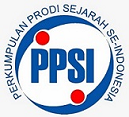The Most Important Medical Theories and Works of Abu Sahl Masihi, an Iranian Scientist during the Golden Civilization of Islam
Abstract
Abu Sahl Masihi is a physician, philosopher, mathematician, and famous astronomer of the first half of the 11th century AD. Some scientists have written that Abu Sahl was the master of Avicenna.This study aims to introduce him by using the most important medical theories and works of Abu Sahl Masihi.This library study has been carried out among the most important medical works of Abu Sahl Masihi. Common searches were performed on valid databases and papers. Abu Sahl did not agree with the detailed description of the treatment issues. He focused on the scientific and theoretical part of medicine including General basics and principles of prevention. In his medical works, Abu Sahl has explained the theoretical part in order and simply and the therapeutic part briefly. He has rejected other physicians' opinions that considered menstrual bleeding to be fetal food and thus ending it during menopause as a reason for termination of pregnancy and said that such blood that the body repels cannot be the source of fetal food. He considered the healthy blood of the mother's body as the source of fetal food. Like Aristotle, Abu Sahl has regarded the heart as the life force center, innate heat, and vital spirit. He also had a significant view of the heart structure and the vessels connected to it. We can introduce Abu Sahl as one of the pioneers of the theory of the beginning of digestion of food through the mouth due to being impregnated with saliva by the enzymes in the secretions of the digestive system. Despite the importance of Abu Sahl’s works, his writings have been less considered. It seems that more research on the noteworthy ideas of this great scientist is needed by scholars and researchers.
Keywords
Full Text:
PDFReferences
Androutsos G KM, Stefanadis C. William Harvey (1578–1657): discoverer of blood circulation. Hellenic Journal of Cardiology. 2012;53(1):6- 9. doi.org/10.2307/1307276.
Ashkevari Q. Mahboub Al-Gholoub. Tehran, Mola publication, 2019.
Azizi MH NT, Azizi F. A brief history of the discovery of the circulation of blood in the human body. Arch Iran Med. 2008;11(3):345- 50.
Bavafai Delivand E. Etizal School of Kharazm during the time of Kharazmshahids (1097-1231 AD). Historical research (scientific research). 2011;3(2):17-50.
Beihaqi A. Tatemeh Savan al-Hikmah. Lahor, Lahore publication, 1972.
Bosworth CE. (2000). History of civilizations of Central Asia. Vol 4, Paris, UNESCO Publication, 2000, p. 306.
Cattermole GL. Michael Servetus: physician, Socinian and victim. J R Soc Med. 1997;90(11):640- 4. doi: 10.1177/014107689709001115.
Dalfardi B, Mahmoudi-Nezhad GS, Mehdizadeh A. How did Haly Abbas look at the cardiovascular system? International Journal of Cardiology. 2014;172(1):36-9. doi: 10.1016/j.ijcard.2013.12.171. Epub 2014 Jan 8.
Elgood C. A medical history of Persia and the eastern caliphate. London: Cambridge University Press; 1951.
Gutas D. Avicenna and the Aristotelian Tradition, London, Braille Publications, 2014.
bn Abi Usaybi'a, A. Oyoun al-Anba fi Tabaqat al-Attiba. Cairo, Al-Heyat al-Mesriah, 1882.
Ibn Motran A. Bostan al-aAtiba va Rozat al-Alba. Tehran, Association of Cultural Works and Honors, 2007.
Keramati Y. The Great Islamic Encyclopedia. Vol 5. Under the supervision of Mousavi Bojnourdi MK. Tehran, Publications of Islamic Encyclopedia Center, 1999. p. 574-578.
Majūsī Ahvazi A. Kāmil al-Sinā'ah al-Tibbīyah (The Perfect Book of the Art of Medicine) Tehran, Tehran University/ McGill University, Institute of Islamic Studies, 2009.
Masihi, AS. Al-Miat fi al-Tibb. Vol. 1, Tehran, Iran University of Medical Sciences Publication, Institute of Medical History, Islamic and Complementary Medicine Studies, 2005, p. 111-114.
Masihi AS. Asnaf Al-oloum Al-hekmiah. Tehran: Islamic Research publication; 1991.
Qefti J. Tarikh Al-hokama. Germany, Leipzig publication, 1903.
Safa Z. History of Iranian literature. 17 ed. Tehran, Ferdos publication, 1953.
Shahrzouri SH. Nozhat al-Arvah va Rozat al-Afrah. Tehran, Scientific and cultural publication; 2005.
Shams Ardakani, MR, Velayati A, Ghasemlou, F, Mokhber Dezfouli MR. Calendar of history, culture and civilization of Islam and Iran. Tehran: Amirkabir publication; 2013.
Samarghandi NA. Chahar Maghaleh. Tehran, Tehran publication; 1954.
Tabrizi A. Matrah al-Anzar. Tehran, Publications of the Institute of Medical History Studies, Islamic and Complementary Medicine Iran University of Medical Sciences, 2004.
Taghavi Shirazi M, Ghods R, Hashem-Dabaghian F, Zargaran A. Abu-Sahl al-Masihi (died circa 1010 AD): The Persian physician in the early medieval era. Journal of Medical Biography. 2020;28(3):132- 5. doi.org/10.1177/0967772017720372.
West John B. Ibn al-Nafis, the pulmonary circulation and the Islamic Golden Age. J Appl Physiol. 2008;105(6):1877- 80. doi: 10.1152/japplphysiol.91171.2008. Epub 2008 Oct 9.
Yarmohammadi H, Rezaian J, Ghanizadeh A. Al-Akhawayni's description of pulmonary circulation. Int J Cardiol. 2013;168(3):1819- 21. doi: 10.1016/j.ijcard.2013.07.040. Epub 2013 Jul 25.
DOI: http://dx.doi.org/10.24042/jhcc.v4i2.17946
Refbacks
- There are currently no refbacks.
Copyright (c) 2023 Zahra Memariani, Mohammad Hashemimehr,
License URL: https://creativecommons.org/licenses/by-sa/4.0
Jurnal El Tarikh is the Journal of History, Culture,and Islamic Civilization (JHCC) [ISSN:2774-7999 dan e-ISSN: 2774-8723] published by Faculty of Adab, Universitas Islam Negeri Raden Intan Lampung, Indonesia in collaboration with Perkumpulan Prodi Sejarah Se-Indonesia (PPSI) and Asosiasi Program Studi Sejarah Islam Se-Indonesia (APSII)
Office: Faculty of Adab, Universitas Islam Negeri Raden Intan Lampung. Jl. Letkol H. Endro Suratmin, Sukarame, Bandar Lampung, Lampung, Indonesia, KP. 34513. Website: http://ejournal.radenintan.ac.id/index.php/eltarikh, Email: Jurnaleltarikh@radenintan.ac.id
Jurnal El Tarikh is licensed under a Creative Commons Attribution-ShareAlike 4.0 International License.







.gif)

1.png)



.jpg)